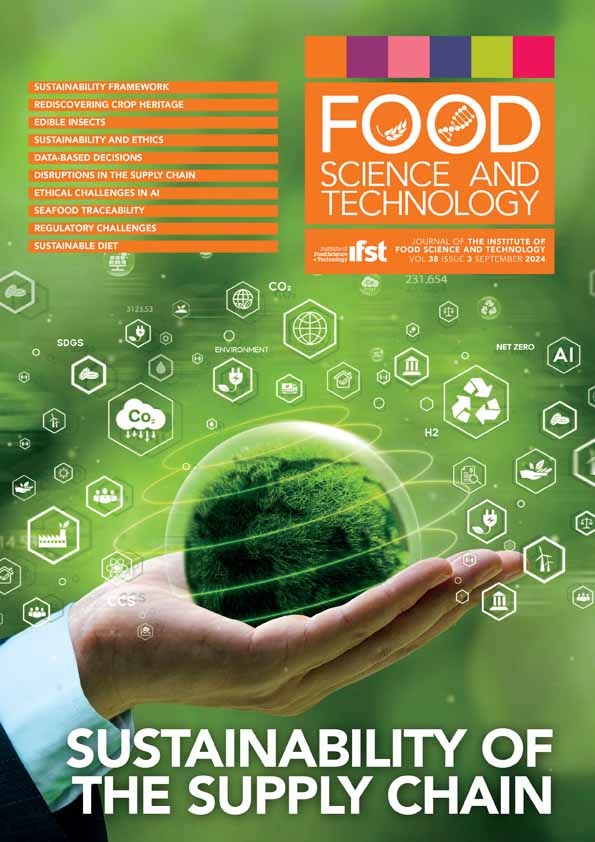Microbiological and physicochemical characterization of organic and nonorganic honey sold in São Paulo State
Q2 Agricultural and Biological Sciences
引用次数: 0
Abstract
This study assesses the microbiological and physicochemical quality of organic and nonorganic honey sold in São Paulo State, Brazil. A total of 26 samples were analyzed, 10 samples of organic honey (OH) and 16 of non-organic honey (NOH) sold in São Paulo State, Brazil. Physicochemical analyses revealed notable variations in moisture, acidity, and hydroxymethylfurfural (HMF) levels between OH and NOH. The average moisture content was 17.74 ± 1.47 g/100 g for OH and 18.12 ± 1.73 g/100 g for NOH. Regarding acidity, OH had an average of 26.90 ± 14.58 mEq/kg, while NOH had 34.32 ± 11.22 mEq/kg. Regarding HMF, OH had an average of 23.40 ± 38.70 mg/kg and NOH had 35.82 ± 39.94 mg/kg. Samples showing deviations from legal standards indicate potential processing or storage issues. The Fiehe test indicated possible fraud in one OH sample and four NOH samples. The Lund test showed no precipitation in any samples, suggesting adulteration in all of them. Diastatic enzyme research revealed the absence of enzymes in three samples, indicating adulteration or inadequate processing. The mean counts of mesophiles were 23 CFU/g for OH and 55.33 CFU/g for NOH, while the counts of molds and yeasts were 126.5 CFU/g for OH and 2289 CFU/g for NOH, exceeding recommended limits and raising concerns about product safety. These findings underscore the need for rigorous quality control measures throughout honey production to ensure safety, purity, and authenticity.圣保罗州销售的有机和非有机蜂蜜的微生物和理化特征
本研究评估了巴西圣保罗州销售的有机蜂蜜和非有机蜂蜜的微生物和理化质量。共分析了 26 个样本,其中 10 个是在巴西圣保罗州销售的有机蜂蜜(OH)样本,16 个是非有机蜂蜜(NOH)样本。理化分析表明,有机蜂蜜和非有机蜂蜜在水分、酸度和羟甲基糠醛(HMF)含量方面存在显著差异。OH 的平均水分含量为 17.74 ± 1.47 克/100 克,NOH 为 18.12 ± 1.73 克/100 克。酸度方面,OH 的平均值为 26.90 ± 14.58 mEq/kg,而 NOH 为 34.32 ± 11.22 mEq/kg。关于 HMF,OH 的平均值为 23.40 ± 38.70 毫克/千克,NOH 为 35.82 ± 39.94 毫克/千克。样品偏离法定标准表明可能存在加工或储存问题。Fiehe 测试表明,一个 OH 样品和四个 NOH 样品可能存在欺诈行为。伦德测试表明,没有任何样品出现沉淀,表明所有样品都掺假。消解酶研究表明,三个样品中没有酶,这表明掺假或加工不当。嗜中性细菌的平均计数为 23 CFU/g(OH)和 55.33 CFU/g(NOH),而霉菌和酵母菌的计数为 126.5 CFU/g(OH)和 2289 CFU/g(NOH),超过了建议限值,引发了对产品安全的担忧。这些发现强调了在整个蜂蜜生产过程中采取严格质量控制措施的必要性,以确保蜂蜜的安全性、纯度和真实性。
本文章由计算机程序翻译,如有差异,请以英文原文为准。
求助全文
约1分钟内获得全文
求助全文
来源期刊

Food Science and Technology
农林科学-食品科技
自引率
0.00%
发文量
0
审稿时长
12 weeks
期刊介绍:
Information not localized
 求助内容:
求助内容: 应助结果提醒方式:
应助结果提醒方式:


